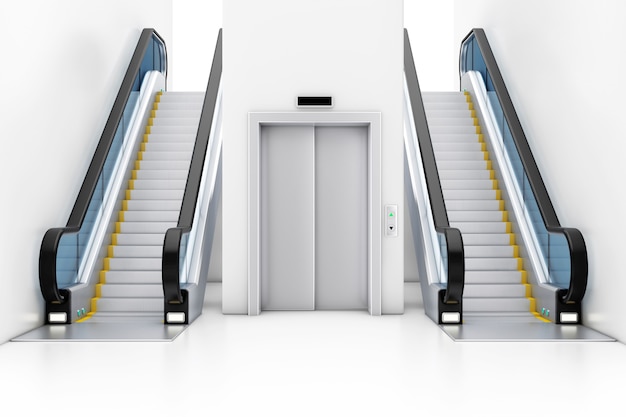Find Dependable Lift Repair Near Me for Rapid and Affordable Solution
Find Dependable Lift Repair Near Me for Rapid and Affordable Solution
Blog Article
Exploring the Globe of Elevators: Common Concerns Faced by Numerous Lift Systems
As we browse via the vertical transportation systems of modern structures, elevators stand out as a vital part of our daily lives. From hydraulic elevators to grip systems and machine-room-less layouts, each lift type comes with its collection of common concerns.
Hydraulic Elevators
Hydraulic elevators, frequently favored for low-rise structures, utilize fluid stress to control the movement of the elevator automobile (lift repair companies). This device includes a hydraulic pump pushing oil right into a cylinder, causing the elevator to relocate the desired instructions. While hydraulic lifts are known for their peaceful and smooth operation, they do include their own collection of usual issues
One widespread problem with hydraulic elevators is oil leak. The seals in the hydraulic system can use out gradually, resulting in oil infiltration. This not only produces a mess but can also influence the lift's performance if left unaddressed. Furthermore, issues with the control system, such as defective shutoffs or a malfunctioning pump, can create interruptions in the elevator's activity.
Normal maintenance and prompt repairs are necessary to ensure the smooth performance of hydraulic lifts. By resolving these usual concerns proactively, structure owners can reduce downtime and guarantee the security and efficiency of their upright transport system.
Traction Lifts
When considering upright transport systems in structures, an additional common kind apart from hydraulic lifts is the traction lift. Traction lifts run utilizing a system of ropes and weights that relocate the elevator vehicle by clutching onto the hoist ropes. This mechanism permits smoother and faster upright transportation contrasted to hydraulic systems.
One of the common problems faced by grip elevators is rope wear. The constant motion of the ropes within the grip system can lead to tear and use with time, possibly creating the lift to breakdown or become unsafe for usage. Regular examinations and maintenance of the ropes are important to make sure the elevator's proper performance and safety and security.
Another issue that traction elevators may come across is associated to the control system. Troubles with the control system can cause concerns such as irregular motion, hold-ups in action times, or perhaps complete closures. Normal screening and maintenance of the control system are critical to avoid such problems and make sure the lift's dependability.
Machine-Room-Less (MRL) Lifts

Among the crucial elements of MRL elevators is the compact gearless traction equipment that is mounted within the hoistway. This maker effectively drives the elevator vehicle without the need for cumbersome tools found in conventional grip elevators. Additionally, MRL lifts typically make use of a counterweight system to balance the vehicle, further enhancing their energy effectiveness.
Despite their benefits, MRL lifts may face challenges associated with repair and maintenance as a result of the constrained room for equipment setup. Availability for servicing elements within the shaft can be limited, needing specialized training for technicians. Appropriate maintenance schedules and routine assessments are critical to make certain the ongoing smooth procedure of MRL elevators.
Overloading and Weight Limit Issues
Overloading and weight limit concerns are crucial worries in elevator procedures. Lift suppliers style raises with certain weight abilities to make sure passenger safety and tools longevity.
When elevators are strained, it places extreme pressure on the motor, cables, and various other parts, potentially causing failures or breakdowns. Safety and disabled platform lifts prices uk security mechanisms such as sensing units and overload sensors are in place to stop lifts from relocating if they find excess weight. In addition, going beyond weight limits can result in increased power usage and damage on the lift system.
To mitigate straining problems, building supervisors should prominently display weight restrictions in elevators and enlighten occupants on the importance of adhering to these constraints - lift repair companies. Regular upkeep checks by certified technicians can likewise help make certain that elevators are running within secure weight specifications. By addressing overloading and weight limit concerns proactively, building owners can enhance lift safety and security and performance
Electric System Failings
Exceeding weight restrictions in lifts can not just lead to mechanical problems but additionally possibly contribute to electric system failings within the lift framework. Electrical system failings are an important issue in lift operation, as they can cause unanticipated shutdowns, breakdowns, or lift repair near me also security dangers.
Normal upkeep and inspections are important to determine and address potential electric problems promptly, london lift company ensuring the secure and efficient procedure of elevator systems. By sticking to weight limitations and carrying out routine electric system checks, building proprietors can minimize the threat of electric failures in lifts.
Verdict

Hydraulic elevators, usually chosen for low-rise structures, make use of fluid stress to manage the movement of the elevator auto.When thinking about vertical transport systems in structures, one more typical type aside from hydraulic lifts is the traction elevator. Grip elevators operate using a system of ropes and weights that relocate the lift auto by gripping onto the hoist ropes. Unlike traditional lifts that call for a different maker space to house the equipment, MRL lifts incorporate many of the parts within the shaft, removing the need for a dedicated machine area.In verdict, elevators deal with usual issues such as hydraulic breakdowns, traction system failures, and electric system problems.
Report this page